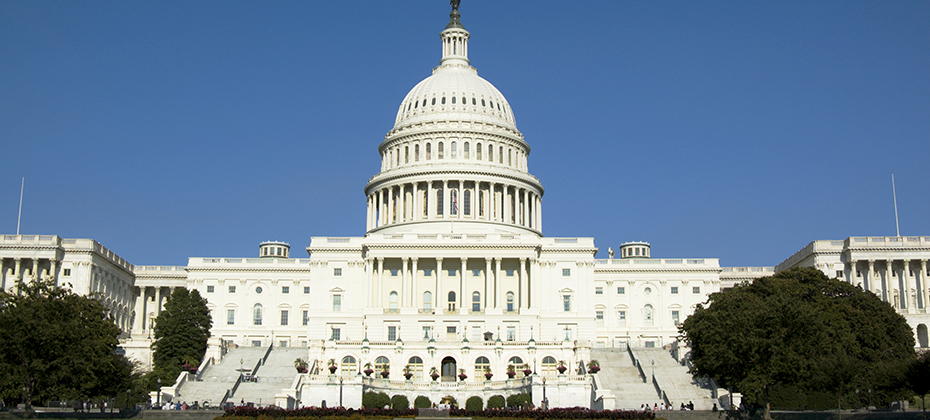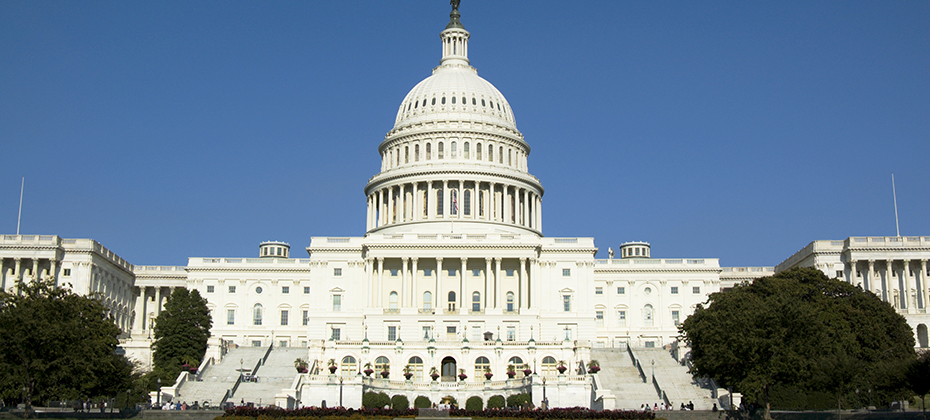Regulatory Compliance

It’s been a wild ride for the financial services industry over the past eight years. After the mortgage meltdown, the Great Recession and a stagnant economy … well, one could say the country had seen better days. Did you watch The Big Short last winter? It all came crumbling down. And then President Barack Obama entered the scene. Change was needed. More oversight introduced. Suddenly, we had the Affordable Care Act, the Dodd-Frank Wall Street Reform Act and the creation of the Consumer Financial Protection Bureau (CFPB). Taxes were raised on the country’s highest earners for the first time since the late-1990s. In essence, the pendulum swung hard and fast to a new era of tightened and rigorous regulation. Fast forward to present day and we find ourselves on the cusp of transitioning to new leadership for the country. A new president, new cabinet, new leaders in Congress. What will it all mean for financial services regulations? It’s helpful to initially take a look back at the key regulations that have been introduced over the past eight years. Mortgage Reform: Long gone are the days of obtaining a quick mortgage. New rules have required loan originators to verify and document the consumer’s income and assets, including employment status (if relied upon), existing debt obligations, mortgage-related obligations, alimony and child support. The CFPB has also expanded foreclosure protections for struggling borrowers and homeowners. Maintaining the health of the mortgage industry is important for the entire country, and updated rules have enhanced the safety and transparency of the mortgage market. Home values have largely recovered from the darkest days, but some question whether the underwriting criteria have become too strict. Combatting Fraud: The latest cyber-attack trends and threats come fast and furious. Thus, regulators are largely addressing the challenge by expecting banks to adhere to world-class standards from organizations such as the National Institute of Standards and Technology (NIST). The Federal Trade Commission (FTC) and the National Credit Union Administration (NCUA) implemented the Red Flags Rule in November 2008. It requires institutions to establish policies and procedures to identify and recognize red flags — i.e., patterns, practices or specific activities that indicate the possible existence of identity theft — that occur during account-opening activities, existing account maintenance and new activity on an account that has been inactive for two or more years. Loss Forecasting: The Dodd-Frank Act Requires the Federal Reserve to conduct an annual stress test of bank holding companies (BHCs), savings and loan holding companies, state member banks, and nonbank financial institutions. In October 2012, the Fed Board adopted the Comprehensive Capital Analysis and Review (CCAR) rules. This requires banks with assets of $50 billion or more to submit to an annual review centered on a supervisory stress test to gauge capital adequacy. In January 2016, Dodd-Frank Act Stress Testing (DFAST) was introduced, requiring bank holding companies with assets of $10 billion or more to conduct separate annual stress tests known as “company-run tests” using economic scenarios. Every year regulators expect to see continued improvement in stress-testing models and capital-planning approaches as they raise the bar on what constitutes an acceptable practice. CFPB: No longer the new kids on the block, the CFPB has transitioned to an entity that has its tentacles into every aspect of consumer financial products. Mortgage lending was one of their first pursuits, but they have since dug into “ability-to-pay underwriting” and servicing standards for auto loans, credit cards and add-on products sold through third-party vendors. Now they are looking into will likely be the next “bubble,” – student lending – and educating themselves about online marketplace lending. Data Quality: Expectations related to data quality, risk analytics, and regulatory reporting have risen dramatically since the financial downturn. Inaccuracy in data is costly and harmful, slows down the industry, and creates frustration. In short, it’s bad for consumers and the industry. It’s no secret that financial institutions rely on the accuracy of credit data to make the most informed decisions about the creditworthiness of their customers. With intense scrutiny in this area, many financial institutions have created robust teams to handle and manage requirements and implement sound policies surrounding data accuracy. --- This is merely a sliver of the multiple regulations introduced and strengthened over the past eight years. Is there a belief that the regulatory pendulum might take a swing to other side with new leadership? Unlikely. The agenda for 2017 largely centers on the need to improve debt collections practices, enhance access to credit for struggling Americans, and the need for ongoing monitoring of the fintech space. Only time will tell, but one thing is certain. Anyone involved in financial services needs to keep a watchful eye on the ever-evolving world of regulation and Washington.

U.S. Communities national contract awarded to Experian to use their data and analytic solutions in order to enable state and local government agencies to help consumers and better serve their communities for the future.

Call if you need to, but protect yourself from TCPA exposure first. Follow these steps when creating your dialing strategy: Obtain customer consent Determine if the number is attached to a landline or a wireless device Verify ownership Scrub your database Calling cell numbers can be a risky business, so be sure to set the proper workflow in motion to remain compliant. >>Learn more

In this new Telephone Consumer Protection Act (TCPA) era, calling your customers isn’t a thing of the past. It’s still okay to reach out to your clients by phone, whether to offer a new product or collect on an overdue bill. But strict compliance with TCPA rules is critical for any business that contacts customers by phone. Some of the very best ways you can protect yourself from TCPA exposure is to follow four steps when creating your dialing strategy: Customer consent: It’s important to maintain and update your customers’ contact preferences and consent to call them. Simply having a phone number on an application isn’t sufficient. Companies are required to have written permission, such as “I consent to calling my cell phone when there’s a problem …” Remember, permission may only be granted by the party who subscribes to the cellular service or who regularly uses that cell phone number. Landline or wireless?: Your database should also include the phone type for the telephone numbers you have for your customers. The dialing rules differ depending on the phone type, so it’s critical to know the type of phone you are calling or texting. Verify ownership: Ownership of cell phones should especially be validated to ensure the number hasn’t been reassigned and that the person who gave consent still owns the phone. One call can be made to a reassigned number with no liability, assuming you have no knowledge the number has changed. Repeating the action could lead to fines from $500 to $1,500 per infraction. Scrub Your Database: Have practices in place to remove any confirmed reassigned phone numbers from your database. This will help to improve your right-party contact rate and save you from potential TCPA headaches. No one disagrees that calling cell numbers is a risky business, but it can be done if you set the proper workflow in motion. Click here to learn more about Experian solutions that will help to reduce your TCPA compliance risk.

With the Oct. 3, 2016 compliance date upon us, many lenders continue to debate how they would like to solve for the Military Lending Act (MLA). With new enhancements, more protections have been granted to members of the military and their dependents when it comes to “consumer credit” products, specifically around the 36% cap on the MAPR. The key then becomes how to identify these individuals. At origination, how can the lender know if an individual is a member of the military, or a service member’s dependent? The answer, of course, lies in verification. Under the new Department of Defense (DOD) rule, lenders will have to check each credit applicant to confirm that they are not a service member, spouse, or the dependent of a service member. The final rule includes a “safe harbor” from liability for lenders who verify the MLA status of a consumer through a nationwide Credit Reporting Agency (CRA) or the DOD’s own database, known as the DMDC. Obviously, lenders will want to have this “safe harbor,” so the question becomes do you opt for the direct or indirect solution? The direct solution is to have the lender access the DMDC on their own. With this option, expected turnaround time is 24 hours for batch searches. The DMDC expects the volume of searches to their servers to increase from 220 million a week to 1.9 billion a week. For some, this feels like a more manual process, but it can be done. The indirect solution involves the CRA accessing the DMDC data on the lender’s behalf. In Experian’s case, this would translate into lenders seeing the MLA indicator on the credit report at point of origination or making a call out for just the MLA indicator. The process is integrated into the credit-pull cycle, so no manual effort is required on the lender’s end. MLA status is simply flagged. The rule also permits the consumer report to be obtained from a reseller that obtains such a report from a nationwide consumer reporting agency. Required data to perform a search includes full legal name, address, social security number and date of birth. This applies to both the credit report add-on and Experian’s standalone solutions. If any of this data is missing from the inquiry, Experian is unable to perform the MLA search. Credit card lenders have until Oct. 3, 2017 to adhere to the new standards, but all other applicable lenders must act now and build out their compliance standards and solutions. Direct or indirect? That is the question. To learn more about MLA or how Experian can help, visit our dedicated-MLA site.

This summer, the Consumer Financial Protection Bureau (CFPB) took a significant step toward reforming the regulatory framework for the debt collection industry. The focus is fueled in part by the large number of consumer complaints the CFPB receives about the debt collection market — roughly 35% of total complaints. Here are highlights from the recent CFPB proposal: Data quality: Collectors would be required to substantiate claims that a consumer owes a debt in order to begin collection Communication frequency: Collectors would be limited to six emails, phone calls or mailings per week, including unanswered calls and voice mails Waiting period: Reporting a person’s debt would be prohibited unless the collector has communicated directly with the consumer first The CFPB said its proposal will affect only third-party debt collectors; however, it may consider a separate set of proposals for first-party collectors. >> Insights into CFPB's latest debt collection proposal

Tick-tock. Tick-tock. Lenders are just weeks away from the required Military Lending Act compliance date of Oct. 3, yet many are scrambling to find a solution. In fact, officials with CUNA and the American Bankers Association said they were still confused by the rules, and requested a six-month extension from the Department of Defense for compliance. Card holders have until Oct. 3, 2017 to comply, but others are trying to navigate what the rule means and how to introduce new practices to protect and serve military credit consumers. What are the top questions still circulating about this key piece of regulation? Here are a few we’ve been tracking, along with some responses to assist with this shift in compliance. 1. What types of accounts are covered under the Military Lending Act (MLA)? It initially applied to three narrowly-defined “consumer credit” products: Closed-end payday loans; Closed-end auto title loans; and Closed-end tax refund anticipation loans. The new rule, issued in 2015 by the Department of Defense, expands the definition of “consumer credit” covered by the regulation to more closely align with the definition of credit in the Truth in Lending Act and Regulation Z. This means MLA now covers a wide range of credit transactions. It does not apply to residential mortgages and credit secured by personal property, such as vehicle purchase loans. 2. Who are the covered borrowers under the MLA? The DMDC database identifies individuals who meet one of the following criteria: Is on active duty Regular or reserve member of the Army, Navy, Marine Corps, Air Force, or Coast Guard, serving on active duty under a call or order that does not specify a period of 30 days or less, or such a member serving on Active Guard and Reserve duty as that term is defined in 10 u.s.c. 101 (d)(6) The member’s spouse The member’s child defined in 38 USC 101(4), or An individual for whom the member provided more than one-half of the individual’s support for 180 days immediately preceding the extension of consumer credit covered by 32 C.F.R. Part 232 The flag returned from DMDC will not specifically identify the active duty military member, but it will flag if the applicant is a covered borrower. 3. How is MAPR calculated? What additional fees are included? The MAPR includes interest, fees, credit service charges, credit renewal charges, credit insurance premiums and other fees for credit-related products sold in connection with the loan. You should work with your legal/compliance teams for MLA restrictions and applicability. 4. What is the difference between the Servicemembers Civil Relief Act (SCRA) and the Military Lending Act (MLA)? Both regulations are designed to protect U.S. service members and their families, but each focus on different areas. SCRA has been around for decades and was designed to temporarily suspend judicial and administrative proceedings and transactions that may adversely affect service members during their actual military service. In fact, if a service member has a debt before he or she joined the active military service, they can have the interest rate reduced to 6 percent, upon request. If the loan is a mortgage, that rate can also be reduced for the duration the member is in the military, plus one year. Other loans are only reduced for the duration the member is on active duty. MLA, on the other hand, is focused solely on providing specific protections for active duty service members and their dependents in certain consumer credit transactions. It was introduced in 2007, but strengthened in 2015. Specifically, it limits APR to 36 percent on covered products, which was recently expanded to include closed-end payday loans, closed-end auto title loans and closed-end tax refund anticipation loans. Unlike SCRA, where the responsibility to activate these protections falls on the service member, MLA requires creditors to verify active duty status and dependents at origination. 5. Explain the difference between accessing MLA status directly versus indirectly. The Final Rule permits a creditor to use information obtained directly from the Department of Defense’s Database. Information can also be obtained from a nationwide consumer reporting agency to determine whether a consumer applicant is a covered borrower. When working with Experian, the one-stop solution will entail outputting the MLA indicator on the credit report at point of origination. We anticipate this solution will be available in fall 2016. --- Not much is known about what the punishments or fines will look like for infractions, but now is the time to start reviewing business governance and procedures that support compliance. To learn more about MLA and to access an on-demand webinar with industry experts, visit our site.

At the end of July, the Consumer Financial Protection Bureau (CFPB) took a significant step toward reforming the regulatory framework for the debt collection and debt buying industry by announcing an outline of proposals under consideration. The proposals will now be considered by a small business review panel before the CFPB announces a proposed rule for wider industry comment. The CFPB said its proposals will affect only third-party debt collectors pursuant to the Fair Debt Collection Practices Act (FDCPA). However, the CFPB signaled it may consider a separate set of proposals for first-party collectors. The collections industry has long been a focus of the CFPB. In 2012, the bureau designated larger market participants in the debt collections marketplace and placed some of these entities under supervision. In 2013, the CFPB released an Advanced Notice of Proposed Rulemaking covering collections. The focus on debt collection is fueled in part by the large number of consumer complaints it receives about the debt collection market (roughly 35% of total complaints). Moreover, the CFPB’s proposals build upon some of the regulatory and enforcement priorities that the CFPB and Federal Trade Commission have pursued for several years around data quality, consumer communication and disclosures. Here are some of the key takeaways for third party debt collectors from the CFPB’s proposals: Address data quality: Collectors would be required to substantiate claims that a consumer owes a debt in order to begin a collection. Collectors would also be required to pass on information provided by consumers in the course of collections activity. New Validation Notice and Statement of Rights: The CFPB’s draft outline would update the information provided to consumers through the FDCPA validation notice, as well as require disclosure of a consumer statement of rights. Changes to frequency of communications: Debt collectors would be limited to six emails, phone calls or mailings per week, including unanswered calls and voicemails. After reaching the consumer, the debt collector would be allowed either one contact or three attempted contacts per week. There would also be a waiting period of 30 days before contacting the family of a debtor who has died. New disclosures on “out of statute” debt and litigation: In the outline, CFPB proposes having debt collectors provide new disclosures to consumers regarding the possibility of litigation and whether the debt is beyond the statute of limitations. Waiting period before sending collection accounts to a consumer reporting agency: Reporting a person’s debt would be prohibited under the draft outline unless the collector has first communicated directly with the consumer about the debt. The CFPB will next hear comments from a panel of small businesses in the industry, complete an analysis of how its proposals would impact small businesses, and take written comments from the public. Following those steps, the agency will issue a proposed rule for comment.

Congress recently took several actions signaling a growing interest in regulatory issues surrounding the Fintech sector. This growing attention follows a number of recent inquiries by federal and state regulators into the business practices in the industry. Subcommittee takes a deep dive into Fintech and OML regulatory landscape In July, the House Subcommittee on Financial Institutions and Consumer Credit held a hearing entitled Examining the Opportunities and Challenges with Financial Technology (“Fintech”). Witnesses and lawmakers voiced optimism that online marketplace lending can help to expand access to capital for consumers and small businesses, but the hearing also focused on a growing schism as to whether new regulations or changes to the underlying framework is necessary to ensure consumers are protected. Some lawmakers and the witness from the American Banking Association expressed concerns that the Fintech and marketplace lenders may benefit from being outside of the supervisory scope of prudential regulators and the Consumer Financial Protection Bureau (CFPB). Witnesses from the marketplace lending industry argued that they are obligated to meet all of the same regulatory compliance requirements as traditional lenders. Rep. McHenry introduces package of Fintech bills aimed at spurring innovation In addition, Congressman Patrick McHenry (R-NC), a member of the House Republican Leadership team and the Vice Chairman of the House Financial Services Committee, introduced two bills this month aimed at spurring innovation in the Fintech industry. H.R. 5724, the Protecting Consumers’ Access to Credit Act of 2016, would clarify that federal law preempts a loan’s interest rate as valid when made. The bill is in response to the Supreme Court’s recent decision not to hear Madden v Midland, a case in which the Second Circuit court ruled that the National Bank Act does not have a preemptive effect after the national bank has sold or otherwise assigned the loan to another party. The reading of this law has created uncertainty for Fintech companies and the banks that partner with them. H.R. 5725, the IRS Data Verification Modernization Act of 2016, requires the IRS to automate the Income Verification Express Service process by creating an Application Programming Interface (API). The legislation is aimed at speeding up and improving the automation of the loan application process. In particular, it is aimed at streamlining the process by which lenders gain access to tax transcript data. Currently, lenders may require applicants to fill out IRS form “4506-T,” which gives the lender the right to access a summarized version of their tax transcript as part of the process to confirm certain data points on their application. According to industry reports, this manual process at the IRS takes two to eight days, creating unnecessary delays for Fintech companies and banks that rely on leveraging data and technology to make faster, informed decision for consumer and small business lending Both bills have been referred to the House Financial Services Committee for review.

New industry report highlights the convergence of business growth and fraud prevention strategies Experian has published its first annual global fraud report covering the convergence of growth strategies and fraud prevention. The report, Global Business Trends: Protecting Growth Ambitions Against Rising Fraud Threats, is designed as a guide for senior executives and fraud prevention professionals, offering new insights on how the alignment of strategies for business growth and fraud prevention can help a business grow revenues while managing risks in an increasingly virtual world. The report identifies five trends that businesses should assess and take action on to mitigate fraud and improve the customer experience in today's fast-paced, consumer-centric environment: Applying right-sized fraud solutions to reduce unnecessary customer disruption: It's time to move on from a one-size-fits-all approach that creates more customer friction than necessary. Instead, companies should apply fraud solutions that reflect the value and level of confidence needed for each transaction. This means right-sizing your fraud solutions to align with true fraud rates and commercial strategy. Having a universal view of the consumer is the core of modern fraud mitigation and marketing: Achieving a universal profile of consumer behavior — beyond the traditional 360-degree view — requires access to a combination of identity data, device intelligence, online behavior, biometrics, historical transactions and more, for consumer interactions not only with you, but across other businesses and industries as well. Companies that translate this knowledge and use it to identify consumers can distinguish a fraudster from a real customer more easily, building trust along the way. Expanding your view through a blended ecosystem: In addition to using your own first-party data sources, companies need to participate in a blended ecosystem, working across businesses and even industries. Fraudsters have access to more data than ever before, including data traditionally used to verify identities, and they use that data to create an entire digital profile. Therefore, you can no longer get to the digital interaction data you need by managing the process in a siloed manner. Achieving an expansive view of the universal consumer requires multiple data sources working together. Achieving agility and scale using service-based models: Today, more and more companies are choosing subscription-based systems rather than building in-house or implementing on-premise solutions. Continuous upgrades and the access to new risk logic that come with subscription models provide more agility and faster response to emerging threats, no matter how fast your volume grows or what products, channels or geographies you pursue. Future-proofing fraud solution choices: Companies need access to a wide variety of traditional and emerging technologies and information sources to fill in knowledge gaps and blind spots where fraudsters try to hide. The ability to modify strategies quickly and catch fraud faster while improving the customer experience is a critical aspect of fraud prevention moving forward. Bringing together these key trends, the report provides business leaders with the insight they need to fight fraud using the same consumer-focused approach currently being used to attract new customers and grow revenue. "There is a persistent mindset that fraud loss is just the cost of doing business," said Steve Platt, global EVP, Fraud and Identity, Experian. "But as fraudsters evolve, those losses are climbing, and the status quo is no longer effective or acceptable. We all need to be as forward-looking in fighting fraud as we are in business operations and marketing, and a real understanding of consumers is critical for success. We're talking about the convergence of business growth and fraud prevention, and we're pleased to provide the first report in the marketplace covering this topic." Download the full report here. The report also features an interactive Fraud Prevention Benchmark tool that companies can use to explore how these trends impact their business and how the performance of their approach measures up against industry practices. The report is relevant to functions spanning the enterprise, including C-suite executives such as chief marketing officers (CMOs), chief risk officers (CROs) and chief data officers (CDOs). The report focuses on business processes where fraud infiltrates, including new account opening, account access, money movement transactions, and emerging trends combating fraud, such as advanced fraud analytics. In each area, the report details how multiple business functions can apply responses to create business growth. Steve Platt added: "We hear from our clients that they are most successful when CMOs along with CDOs and CROs all work together to understand the customer and develop fraud management solutions that create a better overall experience." Experian was recently cited in Forrester's 2016 Vendor Landscape: Mobile Fraud Management Solutions1 report and listed as having nine out of a possible 10 capabilities needed to combat mobile fraud. Experian was also identified as one of three leading players in the fraud detection and prevention space in a new study from Juniper Research.2 Experian applied best practices to create a global report on providing fraud management solutions that allow companies to maximize profitability while providing secure, hassle-free customer interactions. Learn more about Experian’s Fraud and Identity business. 1Vendor Landscape: Mobile Fraud Management Solutions, Forrester Research, Inc., June 2016. 2Online Payment Fraud: Key Vertical Strategies & Management 2016–2020, Juniper Research, June 2016.

What you give, you get. At least that is what popular philosophers claim. And if you think about it, this statement is also applicable to the world of data accuracy. As organizations of all sizes increasingly rely on data to interact with customers and create insights to drive strategy, it’s no secret bad data can quickly lead a company or financial institution down the wrong path, even landing them into regulatory troubles. A recent Experian Data Quality study found: Seventy-five percent of organizations believe inaccurate data is undermining their ability to provide an excellent customer experience. Sixty-five percent of organizations wait until there are specific issues with their data before they address and fix them. Fifty-six percent of organizations believe mistakes can be attributed to human error. For years, organizations have wanted good data simply for operational efficiencies and cost savings, but now a shift has taken place where businesses are using data for nearly every aspect of their organization. The majority of sales decisions are expected to be driven by customer data by 2020, with companies determined to turn data into actionable insight to find new customers, increase customer retention, better understand their needs, and increase the value of each customer. Additionally, the Fair Credit Reporting Act (FCRA) requires those contributing data to provide accurate and complete information to the credit reporting agencies. If they fail to meet accuracy obligations when reporting negative account histories to credit reporting companies, the result could be bureau action and fines. Organizations still deal with a high degree of inaccurate data because there are a number of challenges to maintaining it. Some of them are external forces, but many are internal challenges – most notably a reliance on reactive data management strategies. The biggest problem organizations face around data management today actually comes from within. Businesses get in their own way by refusing to create a culture around data and not prioritizing the proper funding and staffing for data management. Many businesses know they need to improve their data quality, but often have a hard time defining why an investment is needed in the current structure. Solutions exist to get in front of data accuracy challenges. DataArc 360 Powered by Experian Pandora, for example, is designed to check the consumer credit information provided by data furnishers prior to submission to credit bureaus. This allows data suppliers to take more of a proactive approach to ensuring the accuracy of information, that may result in fewer credit disputes and a more positive interaction between consumers and their credit. Creating a clear governance plan, and centralizing data management policies and policies can also clean up internal challenges and improve accuracy standards. The importance of data cannot be neglected, but again, the data has to be clean for it to matter. What you give is what you’ll get.

On June 2, the Consumer Financial Protection Bureau (CFPB) proposed a rule aimed at “payday lending” that will apply to virtually all lenders, with request for comments by Sept. 14. Here is a summary of the basic provisions of the proposed rule. However, with comments, the proposal is more than 1,300 pages in length, and the proposed rule and examples are more than 200 pages long. It is necessary to review the details of the proposed rule to understand its potential impact on your products and processes fully. You may wish to review your current and future offerings with your institution’s counsel and compliance officer to determine the potential impact if major provisions of this proposed rule are finalized by the CFPB. Coverage The proposal generally would cover two categories of loans. First, the proposal generally would cover loans with a term of 45 days or less. Second, the proposal generally would cover loans with a term greater than 45 days, provided that they have an all-in annual percentage rate greater than 36 percent and either are repaid directly from the consumer’s account or income or are secured by the consumer’s vehicle. Ability to repay For both categories of covered loans, the proposal would identify it as an abusive and unfair practice for a lender to make a covered loan without reasonably determining that the consumer has the ability to repay the loan. Or if the lender does not determine if the consumer can make payments due, as well as meet major financial obligations and basic living expenses during and for 30 days after repayment. Lenders would be required to verify the amount of income that a consumer receives, after taxes, from employment, government benefits or other sources. In addition, lenders would be required to check a consumer’s credit report to verify the amount of outstanding loans and required payments. “Safe Harbor” The proposed rule would provide lenders with options to make covered loans without satisfying the ability-to-repay and payment notice requirements, if those loans meet certain conditions. The first option would be offering loans that generally meet the parameters of the National Credit Union Administration “payday alternative loans” program, where interest rates are capped at 28 percent and the application fee is no more than $20. The other option would be offering loans that are payable in roughly equal payments with terms not to exceed two years and with an all-in cost of 36 percent or less, not including a reasonable origination fee, so long as the lender’s projected default rate on these loans is 5 percent or less. The lender would have to refund the origination fees any year that the default rate exceeds 5 percent. Lenders would be limited as to how many of either type of loan they could make per consumer per year. Outstanding loans The proposal also would impose certain restrictions on making covered loans when a consumer has — or recently had — certain outstanding loans. These provisions are extensive and differ between short- and long-term loans. For example: Payday and single-payment auto title: If a borrower seeks to roll over a loan or returns within 30 days after paying off a previous short-term debt, the lender would be restricted from offering a similar loan. Lenders could only offer a similar short-term loan if a borrower demonstrated that their financial situation during the term of the new loan would be materially improved relative to what it was since the prior loan was made. The same test would apply if the consumer sought a third loan. Even if a borrower’s finances improved enough for a lender to justify making a second and third loan, loans would be capped at three in succession followed by a mandatory 30-day cooling-off period. High-cost installment loans: For consumers struggling to make payments under either a payday installment or auto title installment loan, lenders could not refinance the loan into a loan with similar payments. This is unless a borrower demonstrated that their financial situation during the term of the new loan would be materially improved relative to what it was during the prior 30 days. The lender could offer to refinance if that would result in substantially smaller payments or would substantially lower the total cost of the consumer’s credit. Payments Furthermore, it would be defined as an unfair and abusive practice to attempt to withdraw payment from a consumer’s account for a covered loan after two consecutive payment attempts have failed, unless the lender obtains the consumer’s new and specific authorization to make further withdrawals from the account. The proposal would require lenders to provide certain notices to the consumer before attempting to withdraw payment for a covered loan from the consumer’s account unless exempt under one of the “safe harbor” options. Registered information systems Finally, the proposed rule would require lenders to use credit reporting systems to report and obtain information about loans made under the full-payment test or the principal payoff option. These systems would be considered consumer reporting companies, subject to applicable federal laws and registered with the CFPB. Lenders would be required to report basic loan information and updates to that information. The proposed regulation may be found here.

James W. Paulsen, Chief Investment Strategist for Wells Capital Management, kicked off the second day of Experian’s Vision 2016, sharing his perspective on the state of the economy and what the future holds for consumers and businesses alike. Paulsen joked this has been “the most successful, disappointing recovery we’ve ever had.” While media and lenders project fear for a coming recession, Paulsen stated it is important to note we are in the 8th year of recovery in the U.S., the third longest in U.S. history, with all signs pointing to this recovery extending for years to come. Based on his indicators – leverage, restored household strength, housing, capital spending and better global growth – there is still capacity to grow. He places recession risk at 20 to 25 percent – and only quotes those numbers due the length of the recovery thus far. “What is the fascination with crisis policies when there is no crisis,” asks Paulsen. “I think we have a good chance of being in the longest recovery in U.S. history.” Other noteworthy topics of the day: Fraud prevention Fraud prevention continues to be a hot topic at this year’s conference. Whether it’s looking at current fraud challenges, such as call-center fraud, or looking to future-proof an organization’s fraud prevention techniques, the need for flexible and innovative strategies is clear. With fraudsters being quick, and regularly ahead of the technology fighting them, the need to easily implement new tools is fundamental for you to protect your businesses and customers. More on Regulatory The Military Lending Act has been enhanced over the past year to strengthen protections for military consumers, and lenders must be ready to meet updated regulations by fall 2016. With 1.46 million active personnel in the U.S., all lenders are working to update processes and documentation associated with how they serve this audience. Alternative Data What is it? How can it be used? And most importantly, can this data predict a consumer’s credit worthiness? Experian is an advocate for getting more entities to report different types of credit data including utility payments, mobile phone data, rental payments and cable payments. Additionally, alternative data can be sourced from prepaid data, liquid assets, full file public records, DDA data, bill payment, check cashing, education data, payroll data and subscription data. Collectively, lenders desire to assess someone’s stability, ability to pay and willingness to repay. If alternative data can answer those questions, it should be considered in order to score more of the U.S. population. Financial Health The Center for Financial Services Innovation revealed insights into the state of American’s financial health. According to a study they conducted, 57 percent of Americans are not financially healthy, which equates to about 138 million people. As they continue to place more metrics around defining financial health, the center has landed on four components: how people plan, spend, save and borrow. And if you think income is a primary factor, think again. One-third of Americans making more than $60k a year are not healthy, while one-third making less than $60k a year are healthy. --- Final Vision 2016 breakouts, as well as a keynote from entertainer Jay Leno, will be delivered on Wednesday.

It’s impossible to capture all of the insights and learnings of 36 breakout sessions and several keynote addresses in one post, but let’s summarize a few of the highlights from the first day of Vision 2016. 1. Who better to speak about the state of our country, specifically some of the threats we are facing than Leon Panetta, former Secretary of Defense and Director of the CIA. While we are at a critical crossroads in the United States, there is room for optimism and his hope that we can be an America in Renaissance. 2. Alex Lintner, Experian President of Consumer Information Services, conveyed how the consumer world has evolved, in large part due to technology: 67 percent of consumers made purchases across multiple channels in the last six months. More than 88M U.S. consumers use their smartphone to do some form of banking. 68 percent of Millennials believe within five years the way we access money will be totally different. 3. Peter Renton of Lend Academy spoke on the future of Online Marketplace Lending, revealing: Banks are recognizing that this industry provides them with a great opportunity and many are partnering with Online Marketplace Lenders to enter the space. Millennials are not the largest consumers in this space today, but they will be in the future. Sustained growth will be key for this industry. The largest platforms have everything they need in place to endure – even through an economic downturn.In other words, Online Marketplace Lenders are here to stay. 4. Tom King, Experian’s Chief Information Security Officer, addressed the crowds on how the world of information security is growing increasingly complex. There are 1.9 million records compromised every day, and sadly that number is expected to rise. What can businesses do? “We need to make it easier to make the bad guys go somewhere else,” says King. 5. Look at how the housing market has changed from just a few years ago: Inventory continues to be extraordinarily lean. Why? New home building continues to run at recession levels. And, 8.5 percent of homeowners are still underwater on their mortgage, preventing them from placing it on the market. In the world of single-family home originations, 2016 projections show that there will be more purchases, less refinancing and less volume. We may see further growth in HELOC’s. With a dwindling number of mortgages benefiting from refinancing, and with rising interest rates, a HELOC may potentially be the cheapest and easiest way to tap equity. 6. As organizations balance business needs with increasing fraud threats, the important thing to remember is that the customer experience will trump everything else. Top fraud threats in 2015 included: Card Not Present (CNP) First Party Fraud/Synthetic ID Application Fraud Mobile Payment/Deposit Fraud Cross-Channel FraudSo what do the experts believe is essential to fraud prevention in the future? Big Data with smart analytics. 7. The need for Identity Relationship Management can be seen by the dichotomy of “99 percent of companies think having a clear picture of their customers is important for their business; yet only 24 percent actually think they achieve this ideal.” Connecting identities throughout the customer lifecycle is critical to bridging this gap. 8. New technologies continue to bring new challenges to fraud prevention. We’ve seen that post-EMV fraud is moving “upstream” as fraudsters: Apply for new credit cards using stolen ID’s. Provision stolen cards into mobile wallet. Gain access to accounts to make purchases.Then, fraudsters are open to use these new cards everywhere. 9. Several speakers addressed the ever-changing regulatory environment. The Telephone Consumer Protection Act (TCPA) litigation is up 30 percent since the last year. Regulators are increasingly taking notice of Online Marketplace Lenders. It’s critical to consider regulatory requirements when building risk models and implementing business policies. 10. Hispanics and Millennials are a force to be reckoned with, so pay attention: Millennials will be 81 million strong by 2036, and Hispanics are projected to be 133 million strong by 2050. Significant factors for home purchase likelihood for both groups include VantageScore® credit score, age, student debt, credit card debt, auto loans, income, marital status and housing prices. More great insights from Vision coming your way tomorrow!

Four Experian employees reflect on financial lessons and challenges learned during their time served in the military. Pedro Martinez, based at Camp Lejeune in North Carolina, was earning a monthly salary of just $680 as a Private First Class for the Marine Corps. in 1988. Winter was nearing, and since he was living off base, he needed a heater. “I was able to purchase one with ‘easy credit’ for $15 per month, for 18 months,” said Martinez, now living in Costa Rica. “I ended up paying a lot more than driving to Kmart and getting one there if I had the money. But for the purchase I was able to make at the time, I had to finance it, and I remember the interest rate was almost 40 percent.” Fast forward decades later, and Martinez recalls those same “easy credits” and payday loans surround local bases. Advance paycheck services offering rates of 30 percent and beyond for brief, 15-day cycles abound. While military base consumer advisors can encourage personnel to steer clear, more formal protections have been lacking. Until now. “The Military Lending Act is definitely a great measure to assure a fair consumer treatment, regulate high-interest rates, and safeguard families from going bankrupt,” said Martinez. No one can tell the stories of military life better than those who have lived it. They understand the training, sacrifices, day-to-day grind as well as the experiences of managing life on base and far from home. Financial education is lacking among all consumer groups in the country, and it is easy for a few credit mishaps to take individuals to a place where they soon find themselves struggling to get out of debt and obtain affordable credit. “I witnessed countless friends in the military finance furniture, receive cash advances and take out loans on their cars, which ultimately hurt them financially,” said Marshall Abercrombie, who served five years as a Navy Corpsman with the Marines. “Unfortunately, there are more title loans, cash advance and furniture leasing companies found within military towns compared to legitimate financial institutions. So, when you combine word-of-mouth, inexperience and easy access you end up with necessary legislature like the Military Lending Act.” Abercrombie, who currently resides in the southeast, claims his first “solo” experience with a financial institution saved him from falling down a bad path. “I can remember gripping my diploma thinking ‘now what am I going to do with all this money I’m about to start making?’” said Abercrombie. “Fortunate for me I was immediately greeted by a very eager representative of Armed Forces Bank. Despite being only 19 years old, looking back it’s apparent how much opportunity someone like me represented to a bank given I now had a government job that required I set up auto-deposit for future paychecks.” Especially for those military members sent overseas, opportunities and challenges can be unique. Michael Kilander, now a Southern California resident, was deployed overseas in Germany in the early 90s with his wife and ran into trouble with a large U.S. bank. “We had a credit card that we fell a month behind in paying,” says Kilander. “We had the money each time but did not receive the statement/ bill until a week after the due date. The military mail system took a great deal of time, particularly if you lived off base in the local Germany economy, as we did. We asked if the bank could mail the bill a little earlier, but they refused and were uninterested in the challenges of the APO system. Consequently we had to keep track of the amount spend on the card and estimate the likely charges and pay before we received the bill. We switched cards a few months later.” Raymond Reed, who enlisted with the Navy out of high school, was luckily advised by his parents to join a military credit union. “I did not realize I needed credit, and assumed credit was only offered to those with savings,” said Reed. “During my Navy tour, I joined a military credit union and since I did not have standard expenses, other than car insurance, which was covered by my paychecks. At the end of my tour, I saved and paid cash for my motorcycle, as I was accustomed to since I had a nice savings established.” The stories of stresses and opportunities surrounding military and credit are diverse and widespread, but the positive news is updated regulations will add increased protections. Learn more about the Servicemembers Civil Relief Act and now enhanced Military Lending Act to understand the varying protections, as well as discover how financial institutions can comply and best support military credit consumers and their families.